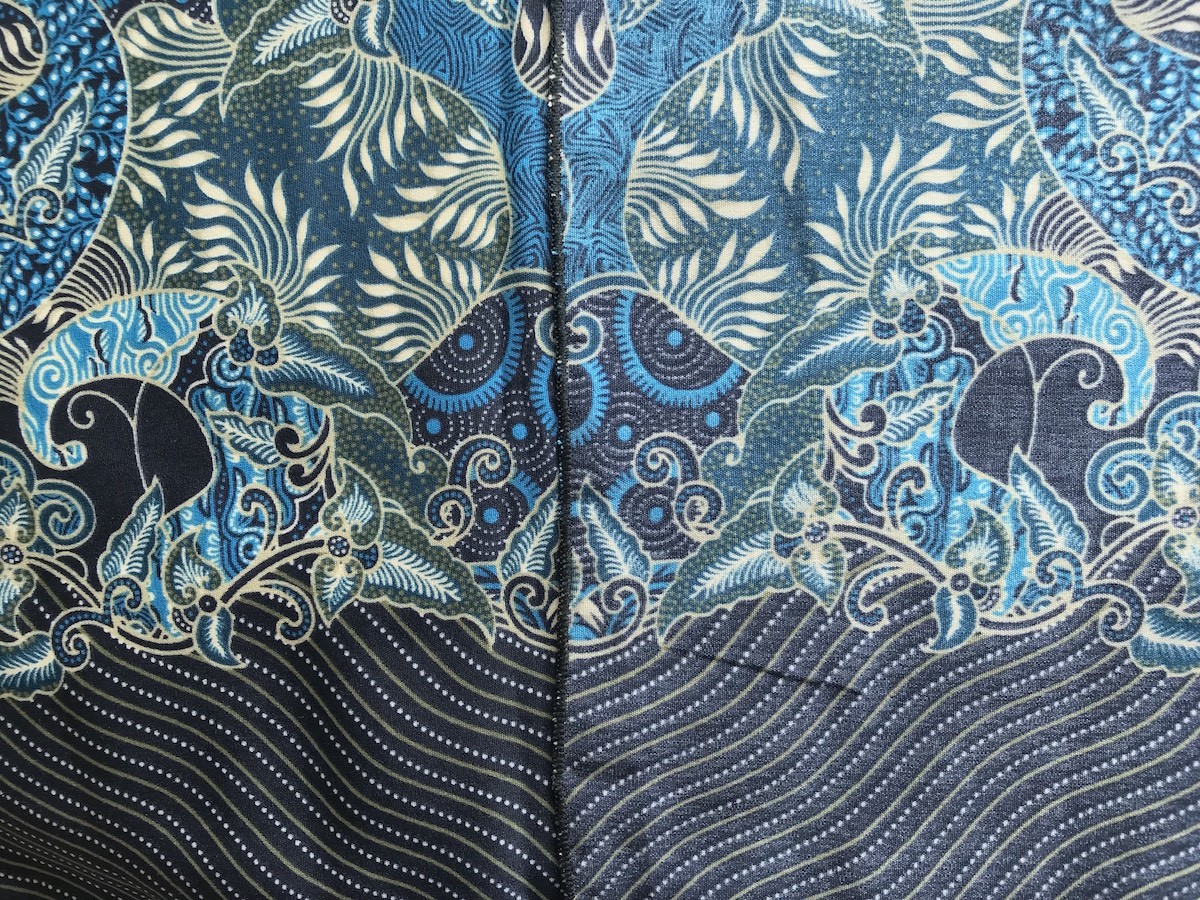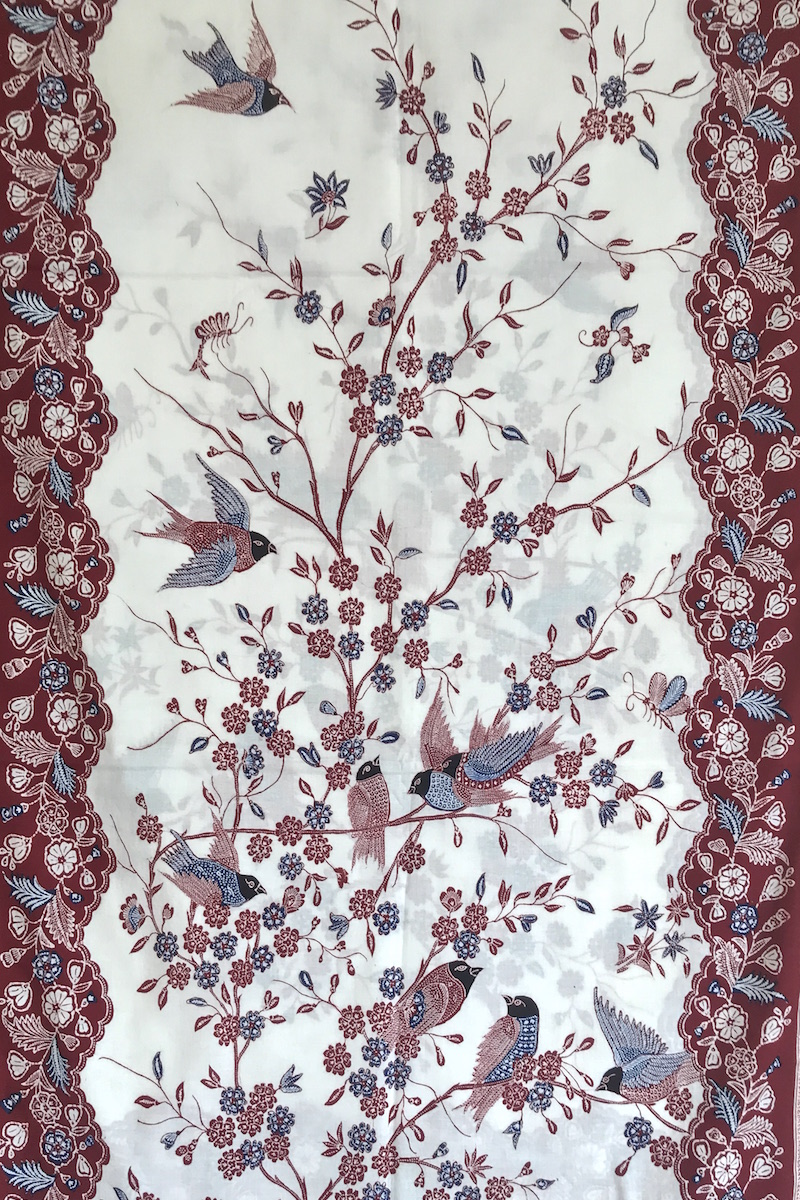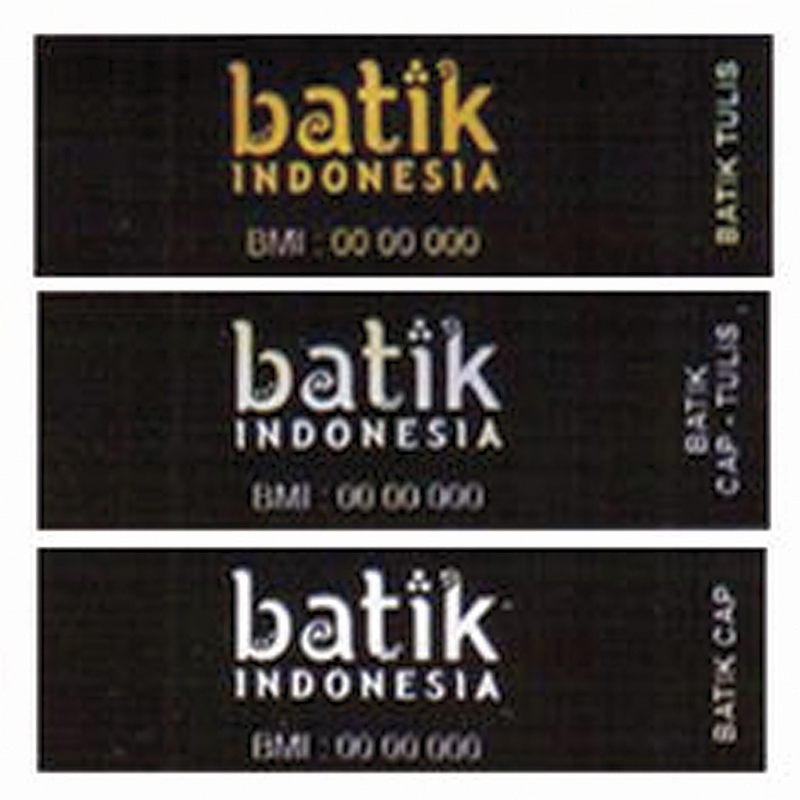Here’s How You Spot the Real Fake Batik

Is this real? Or is this fake batik?
The most frequently asked question during our interactions with friends and clients is: how to differentiate real and fake batik ar? Nice job! You have levelled-up in your batik appreciation journey!
Back in January, the war against fake batik had just begun. Batik practitioners are standing up against digitally machine-printed textiles that have dominated the market and have posed a real threat to the traditional small-scale artisans.
Batik: What’s That?
But first… sounding like a broken record, what is batik?
Batik, as recognised by UNESCO, consists of three components: the technique, the motif and the use of it. There is a range of motifs with historical significance in terms of cultural heritage and philosophy. UNESCO inscribed Indonesian batik into the List of Intangible Heritage as Indonesia is the only place in which the use of batik is culturally relevant, although the practice of batik is very common worldwide.
Throughout my batik journey to Indonesia, regardless whether they are from small villages or big factories, the true batik artisans put a significant emphasis on the batik process, the one with hot wax, specifically. Batik is a textile production technique by applying dye-resist agent, commonly hot wax or glutinous rice paste, onto white cloth before dyeing. This process is repeated for a few cycles to finally reveal the beautiful patterns that the world goes gaga over.
So, the question now becomes: what is “real” batik?
The War Against Cheap Batik – The Problems
Ever since its inception in 2009, unfortunately, batik has garnered worldwide attention, resulting in the rise of cheaper digital machine-printed textile.
The greatest impact is the loss of livelihood for the artisans. They are unable to keep up with the speed and the price of the machine-printed textile. Not only does it require less manpower, printing massive quantities is the only way to justify the investment in machineries. There are now piles of machine-printed batik textiles that drive the prices way below the real deal. The art of batik becomes undervalued.
To make matters worse, many are selling “printed batik” as “traditional batik”, as a commodity of rich culture and long-established heritage, with considerable profit. An example is a renowned fashion label moved to digitally printed textiles, citing less water waste and urging consumers and batik enthusiasts to “reconcile the two competing ends of the market”. It is a slap in the face when the core of batik is disregarded. Many brands are also selling “batik” without knowing what it is and, as a result, feeding the customers the wrong information about what matters.
Cultural argument and social impact aside, the sheer amount of textile production also has a huge implication on the environment. Textile industry is arguably one of the dirtiest industries in the world and the excessive production of batik textile, and the corresponding waste, is uncalled for.
The Aid of Technology
One of the biggest challenges that the batik industry is facing is the issue of manpower regeneration. The average of the penyanting (the lady who hand-draws wax patterns using a canting) is around 40 years old. The younger generations would choose to work in a factory or open up a rice stall because the cash flow is more guaranteed than selling a piece of batik. Technology and machines are required to resolve this manpower crunch and to fray some production costs.
From fractal software to create new designs, robotic panels and arms to apply hot wax in a precise manner to digital wax and photon-induced machines to hack the weather for drying are some innovations to speed up the process of batik making. The results from these new gadgets may or may not be obvious in the final piece and they will be hard to differentiate from traditional batik.
Many purists only recognise hot wax with canting and cap as the “official” tools of batik making and the cloth must be manually-dyed. Everything else is deemed as an impostor, a threat to the extinction of this sacred and traditional textile art. Where along the process and how far would you allow innovation in batik making? Would you consider these screen printing with cold wax, as shown on the left, a batik?
So, How to Spot the Real Deal?
Finally, here is the section that is probably the reason why you click on this article in the first place. Simple, let your senses be your guide. To clarify, these guides are to pick out hand-drawn and hand-stamped batik with hot wax from cloth made with other techniques.
Sight
The major signs are visuals. No real batik is perfect. Dots are misaligned, lines have uneven thickness and opacity, colours are bleeding in some spots and speckles of wax residues are all over the cloth.
The best advice that everyone finds useful is to look at the flip side. As most batik are hand-dyed, dye molecules should bind to the fibers from both sides of the cloth, the two sides must have the same colour opacity. In case of digitally-printed cloth, the machine only prints on one side of the cloth, leaving the “back” side opaque.
Lines may be faded on the back side of the cloth as many newly-produced cloth are only being waxed on one side and the wax may not penetrate well. Hence, they are not the best indicator of a real/fake batik.
In some Indonesian batik cities, like Pekalongan and Jogjakarta, established (read: big and able to afford additional resources to dance with bureaucracy) batik workshops may have labels with registration numbers attached to every cloth or apparels, indicating certified, authentic batik.
Smell
Nope, you are not looking for ‘fresh linen’ or ‘tropical beach’ candle smell. You are looking for the smell of wax, which has been described as ‘earthy’, ‘sweet’ (if the workshop uses mainly beeswax) and ‘crayon that my toddler ate’.
In cases of machine-printed textile, it smells like ‘alcohol’, ‘metallic’, or “my house printer ink’ (Thank you, Captain Obvious). Whereas, cold wax batik will smell like kerosene or petrol.
Listen
To buy a piece of textile is an experience. Talk to the seller and tune up your social awareness antenna. By asking the right questions, such as the materials, the production village, the motifs, you can feel the passion or the panic from the sellers.
The real dealer will talk at length about their collections, recommend books and show great wealth of knowledge. The fake one will either give a blank stare when asked about a canting or smooth talk their way through.
One question that you always look out for when buying batik textile is: do you want to buy by the piece or by the metre? Most of the time, real batik are being sold by the piece of approximately 2m x 1m. In very rare cases or by order only, hand stamped batik are available in bolts and can be bought by the metres.
Cool, So What Now?
Congratulations, you have now been able to differentiate real versus fake batik!
Needless to say, we can give you pointers but your senses are your best guide. Educate yourself by going to the shops, attending talks and workshops and joining textile trips to meet with the artisans. Demand more from your favourite brands by asking (the right) questions about their products.
If you are a seller, know your products well and be an advocate by being truthful about printed textiles. There are other ways to justify your price tag but using heritage and cultural preservation is a disrespectful act to the rest of the artisans community.
Handmade batik using canting or a cap has a different charm and soul that can never be replicated with machine-printed textiles. Getting the real deal batik is an investment for a long time to come.
Now, it’s your turn. How much would you allow technology in the production of textile heritage? What tips do you have to differentiate real versus ‘fake’ batik? Share your thoughts with us and send this article to other batik enthusiasts.
2 Comments
CONTACT US | TERMS OF USE | PRIVACY POLICY
© 2024. NERD VENTURES. ALL RIGHTS RESERVED.



Love your articles on real vs fake batik. I immediately checked my batik shirts and 6 out of 7 pieces are real. Thanks for th useful tips!
Thank you for your kind words! Glad that you found it useful.